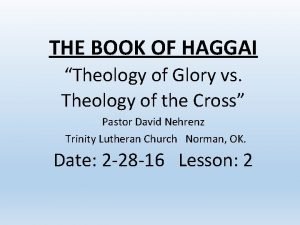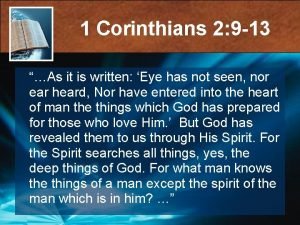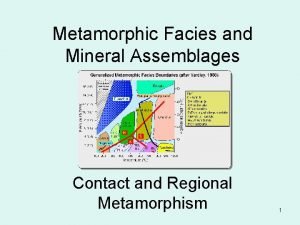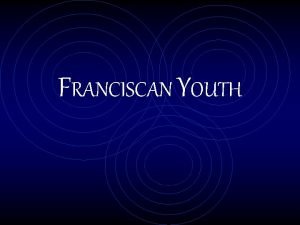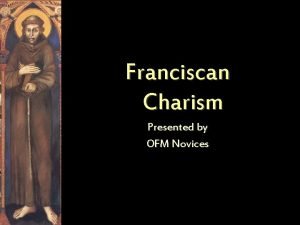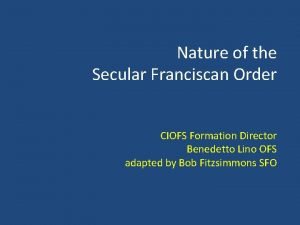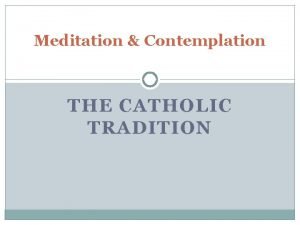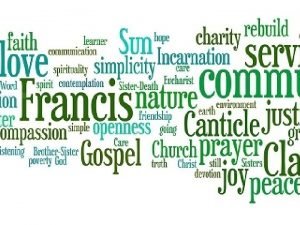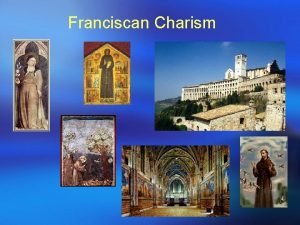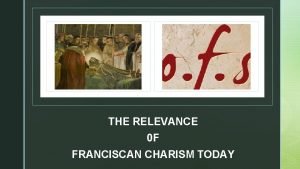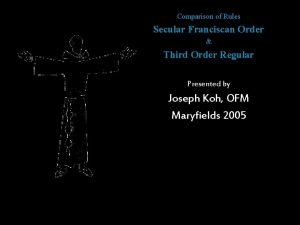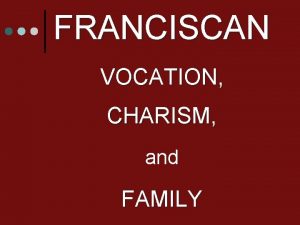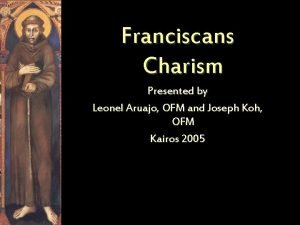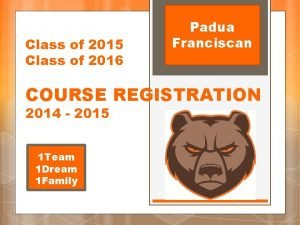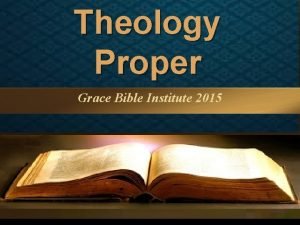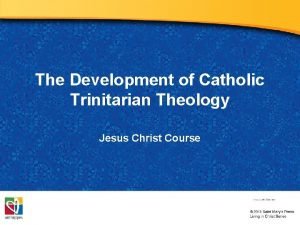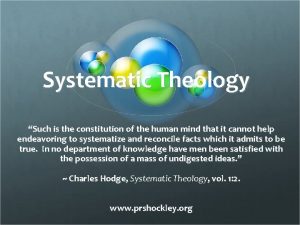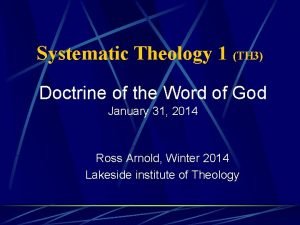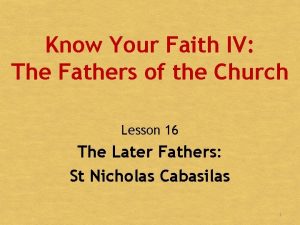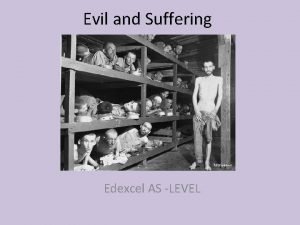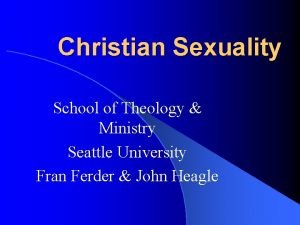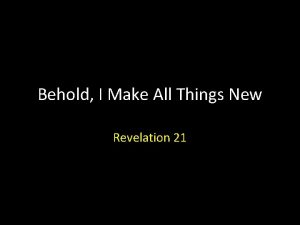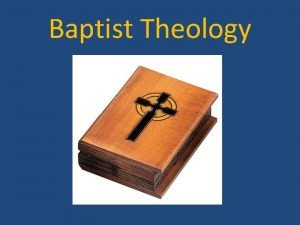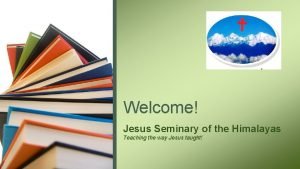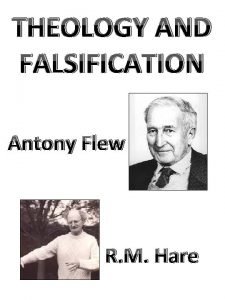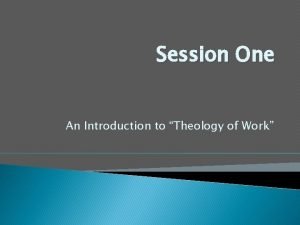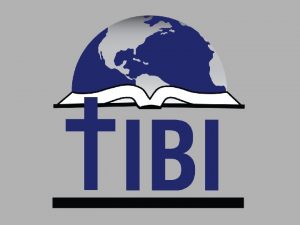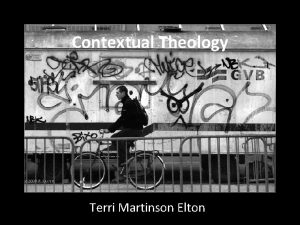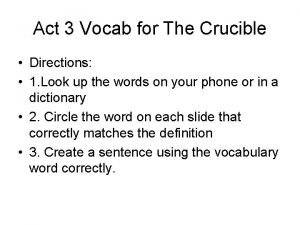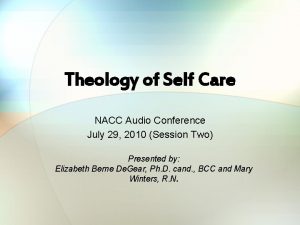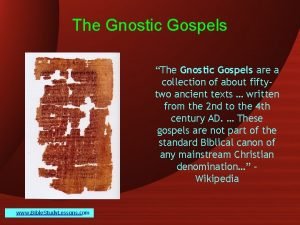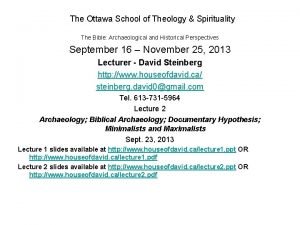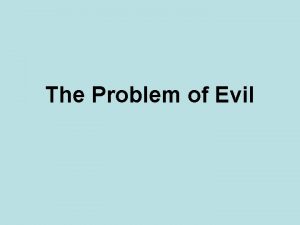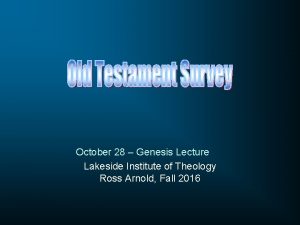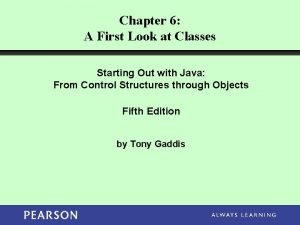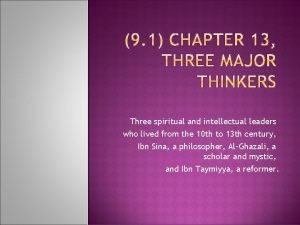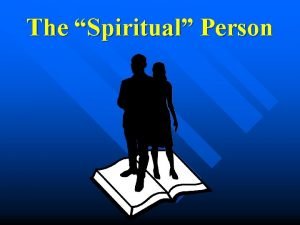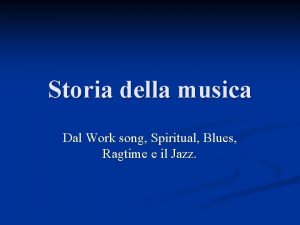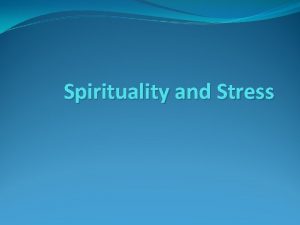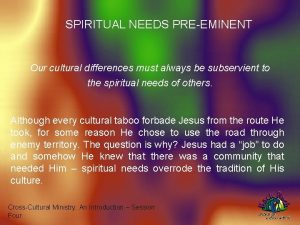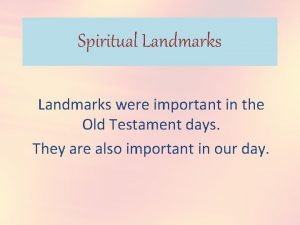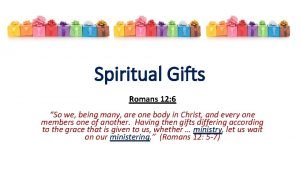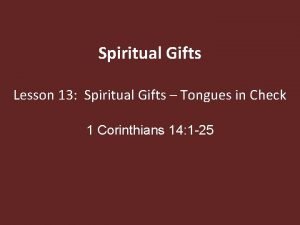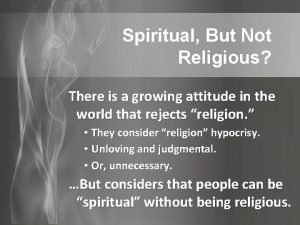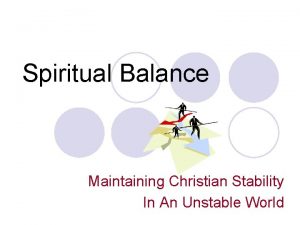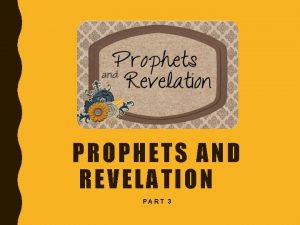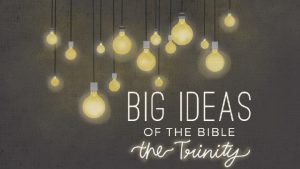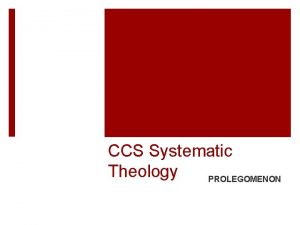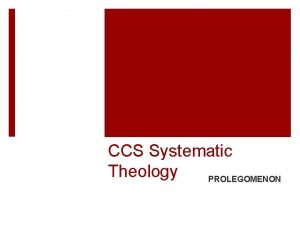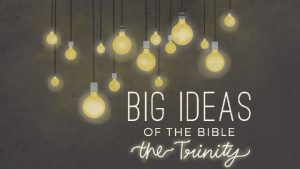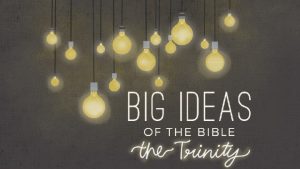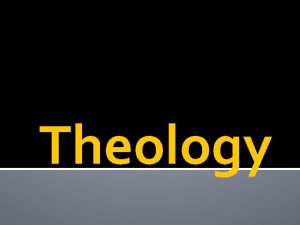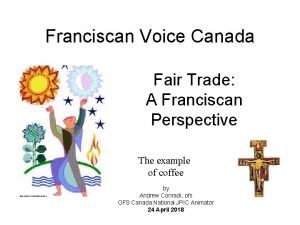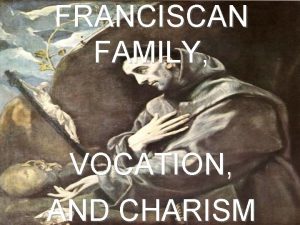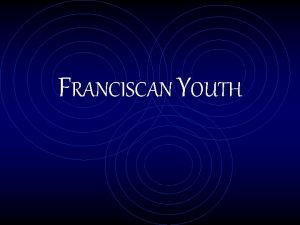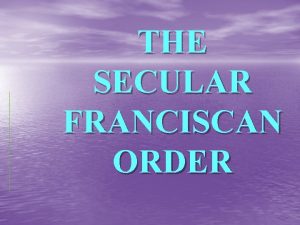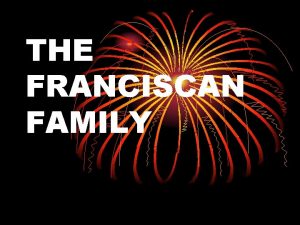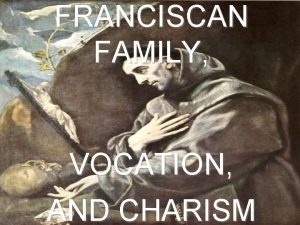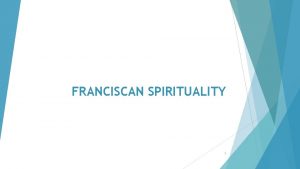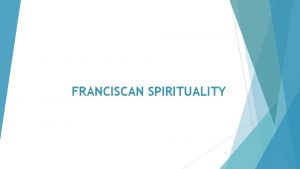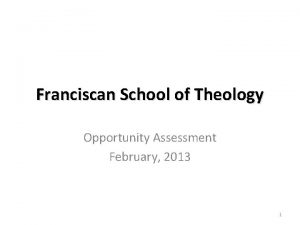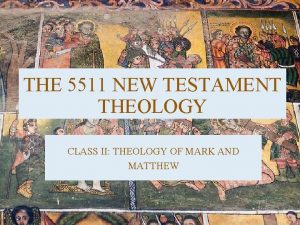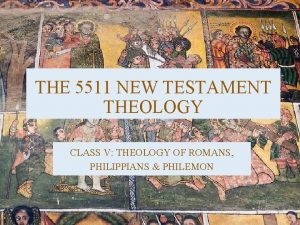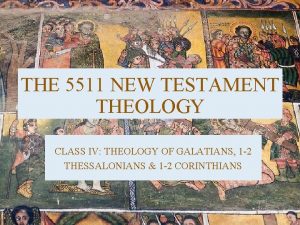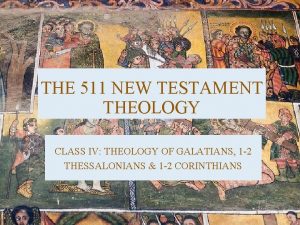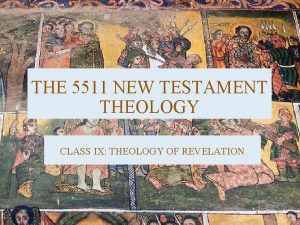FRANCISCAN THEOLOGY Spiritual AssistantFormator Class May 16 2015





















![St. Francis of Assisi • GOD is the Father [ABBA] who does everything out St. Francis of Assisi • GOD is the Father [ABBA] who does everything out](https://slidetodoc.com/presentation_image/25c043ecf6a87b682eefb5b4400c85cb/image-22.jpg)





![Bonaventure The second founder of the Order • The Trinity [from the Cappadocians] • Bonaventure The second founder of the Order • The Trinity [from the Cappadocians] •](https://slidetodoc.com/presentation_image/25c043ecf6a87b682eefb5b4400c85cb/image-28.jpg)























![Scotus - Thisness [haecceitas] The doctrine of thisness applied to the human person invests Scotus - Thisness [haecceitas] The doctrine of thisness applied to the human person invests](https://slidetodoc.com/presentation_image/25c043ecf6a87b682eefb5b4400c85cb/image-52.jpg)











- Slides: 63

FRANCISCAN THEOLOGY Spiritual Assistant/Formator Class May 16, 2015 Sections adapted from the 2009 Summer Seminar available on http: //www. nafra-sfo. org/Formation-Franciscan. Spirituality/index. html

Theology leads to Spirituality • Purpose of theology – Bring us closer to God. • Franciscan theology gives the framework to Franciscan life. – A loving God, Christ-Gospel-centered life – Incarnation: For us to know God FC-2 – We are to do the will of God FC-2 • Franciscan Perspective: – Positive attitude, – God’s love leads to better life, – support for others. 2

Basic Catholic Theology Common Elements • God is revealed through revelation. • Jesus Christ: – Fullness of revelation: Through his words and his life. – Guided by the Holy Spirit: Maintains the integrity of the message. • These four pillars of the Catholic faith are: – The Profession of Faith – The Creed (What We Believe) – The Celebration of the Christian Mystery – Liturgy and Sacraments (How We Celebrate) – Life in Christ – Christian Morality (How We Live) – Christian Prayer – A Personal Relationship with God (How We Pray) 3

Common Elements (Cont. ) • Primacy of the Catholic Church : – Historical claim; – Guardian and teachers of the doctrine of Christ. – Catechism of the Catholic Church • The Bible: – God’s Holy Word. – Christ is the Unique Word of Sacred Scripture. – God speaks to us through the words of sacred scripture. Also FC-17 • Trinity 4

Two ways of looking at the Incarnation • What is your view of God? – Dominican View – Franciscan View • Both are acceptable! – Where is the Church going today? 5

Dominican View Ascending – Latin – Primary Theology • Dominican School: Western Fathers; St. Augustine; St. Anselm of Canterbury, St. Thomas Aquinas. St. Benedict, St. Ignatius of Loyola, St. Dominic 6

St. Benedict • GOD is the Almighty, the Transcendent. • CHRIST is Our Redeemer and High Priest. • MAN is the Privileged Adorer, expressing the praise of all creation. • LITURGY is the principal "work" of the monastic community; it teaches and evangelizes. 7

St. Ignatious of Loyola GOD is Creator, Lord, Owner of the Universe. CHRIST is the King. MAN is his soldier in the battle against evil. PLAN of Life discovered in the Spiritual Exercises, the Examen of Conscience, • Personal Meditation. • • 8

St. Dominic • • GOD is Truth. CHRIST is the Word revealing the Father. MAN is a Student seeking after Truth. WAY of Life centered on Study, Science, and Preaching the Truth. 9

Most Christian Spirituality Points to the Passion Death & Resurrection Emphasis: redemptive suffering 10

St. Augustine -Original Sin St. Anselm - Doctrine of Atonement Dominican Tradition Dominic & Thomas Aquinas Essence Intellect Sin & atonement centered knowledge Jesus as expiation for sin Work at worthiness Earn salvation Flee the world Jesus – no Pope Leo XIII 1879 Aterni Patris Primary view –Juridical Path of ascent 11

GOD – sanctity and holiness - spirituality Our Movement toward GOD Leaving behind the world to achieve the spiritual US – Creation The world, material sin Spirituality of ascent Seeking Perfection and holiness primary & monastic spirituality to leave the world (by overcoming sin and the material world) to ascend to union with the Divine (Spiritual or union of the soul with God) 12

CHARACTERISTICS • Building a sense of boundaries e. g. Right & wrong. • Observance of Laws, rules, commandments, moral codes etc • Performance oriented – earn worthiness, earn salvation • Spirituality of Addition – more is better • Observance & Faithful attendance • Atone for sin, guilt, penance • Constantly re-doing our start up work 13

Standard view Sequence of Creation Redemption Fall But what if Scripture describes an Alternative view of events 14

St. Augustine - Original Sin St. Anselm - Doctrine of Atonement Dominican Tradition Dominic & Thomas Aquinas Essence Intellect Sin & atonement centered knowledge Jesus as expiation for sin Work at worthiness Earn salvation Flee the world Jesus – no Pope Leo XIII 1879 Aterni Patris Primary view –Juridical Path of ascent The Cappodocians Athanasius. Basil the Great Gregory of Nyssa Gregory Nazianzus Franciscan Tradition Francis & Clare Bonaventure & Scotus Person Volition - WILL Love-centered - sensory affective Jesus - blueprint of creation Incarnation unites and transforms the world Love the world – vestige Jesus – Yes Eph 1: 3 -14 & Col 1: 15 -20 Alternate view – relational Path of Descent 15

Franciscan View • Descending – Eastern Fathers: Basil the Great, Gregory of Alssa. – Followed by St. Bonaventure, Bl. John Duns Scotus • Franciscan view of creation: Begins with Blueprint before time – Jesus always; (Timeline) – The blueprint; – The Master Plan; – The First born of creation; – Pre-existent Word • Goal of creation: – All things created through Him, for Him and have their goals/fullness in Him. 16

GOD Our movement toward God’s movement toward all creation Ascending to spiritual union The Incarnation transforms and unites material & Spiritual By fleeing the world All is good All is holy Us - Creation Us – Creation – Material world, sin 17

Franciscan View of the Creation Sequence Beginning with the “Blue-print” Jesus Christ God's activity begins before time 18

Sequence of Creation Jesus Creation Incarnation fall Design Execution Completion • Jesus the Master Plan • First born of Creation – Alpha & Omega • Pre-existent Word- Logos • Center, focus, reason for creation, goal of creation. All things created through, for Him & have their goal/fullness in Him 19

The Foundations of Franciscan Spirituality • Incarnation – God’s greatest gift • Humility & Poverty of God • Jesus is the ultimate answer • Path of Littleness [descent] – creatureliness & dependence [contingency] • Mutual & reciprocal relationships 20

St. Augustine - Original Sin St. Anselm - Doctrine of Atonement Dominican Tradition Dominic & Thomas Aquinas Essence Intellect Sin & atonement centered knowledge Jesus as expiation for sin Work at worthiness Earn salvation Flee the world Jesus – no Pope Leo XIII 1879 Aterni Patris Primary view –Juridical Path of ascent The Cappodocians Athanasius. Basil the Great Gregory of Nyssa Gregory Nazianzus Franciscan Tradition Francis & Clare Bonaventure & Scotus Person Volition - WILL Love-centered - sensory affective Jesus - blueprint of creation Incarnation unites and transforms the world Love the world – vestige Jesus – Yes Eph 1: 3 -14 & Col 1: 15 -20 Alternate view – relational Path of Descent 21
![St Francis of Assisi GOD is the Father ABBA who does everything out St. Francis of Assisi • GOD is the Father [ABBA] who does everything out](https://slidetodoc.com/presentation_image/25c043ecf6a87b682eefb5b4400c85cb/image-22.jpg)
St. Francis of Assisi • GOD is the Father [ABBA] who does everything out of love [Divine Nature]. • CHRIST, in His Humanity, is the Beloved Son who shows us the Father; and is our Brother. • MAN has been reconciled [reunited] by Jesus and shares in the life of God who is Good, All Good, the Highest Good. • CREATION is the reflection of God's goodness; all are fellow creatures, our brothers and sisters. Everything shares in God’s nature and returns praise to the Father according to its unique nature – only man struggles 22

St. Francis of Assisi • WAY TO GOD is in the freedom of "sons & daughters, ” who desire relationship with the Father, through Jesus in the Spirit • PRAYER is simple, affective, centered on the humanity of Jesus as seen in the Gospels. God is everywhere and any formula is good if it is the trusting prayer of a "son or daughter. “ How you journey determines How you arrive - Filled with much Joy. 23

Eucharist • Shown in Exhortations • E = Eucharist (IPE) – For Francis the final act of God’s [Jesus] selfemptying. To be physically present in the lowest, poorest, humblest manner of food – Eucharist and reverence – This manner of giving on God’s part is our model for imitation • Living it 24

How Francis saw God and Jesus • Not a theologian. – Directed by what God showed/communicated to him. • Saw God in creation. Simplicity • God is love • Poverty & Humility – Incarnation, Passion/Crucifixion, Eucharist • Trinitarian: Relationship – A model for us: Imitate the Trinity: a model of collaboration. 25

Questions for Part 1 1. What was your image of God? What do you hold on too? How has it changed? 2. Consider the different focus between these 2 major Spiritual Traditions. How might the difference affect your approach to God and Life. 26

Boneventure 1. Trinity 2. The Breviloquium (7 Chapters) 1. 2. 3. 4. 5. 6. 7. On the Trinity of God On the Creation of the World On the corruption of Sin On the Incarnation of the Word On the Grace of the Holy Spirit On the Sacramental Remedy On the Repose 3. The Souls Journey into God. (7 day journey. ) 27
![Bonaventure The second founder of the Order The Trinity from the Cappadocians Bonaventure The second founder of the Order • The Trinity [from the Cappadocians] •](https://slidetodoc.com/presentation_image/25c043ecf6a87b682eefb5b4400c85cb/image-28.jpg)
Bonaventure The second founder of the Order • The Trinity [from the Cappadocians] • Begins with person not substance • Identifies the Trinity on the basis of inter-Trinitarian [interpersonal] relationships 28

The Father – Supreme goodness – Unbegotten source – Total giving-ness – generativity/fecundity – 2 modes of emanation • Intellect – Beloved Son • Will – Spirit = freedom’s choice to Love 29

Will of God – Holy Spirit – Spirated from both Father & Son – Total receptivity – Receptive; not productive – Mutual bond between Father & Son – The expression of God’s will – LOVE • choice made in absolute freedom 30

Intellect Eternal Word v. Begotten v. Perfect receiver and reflector of God v. All God is expressed in the Son v. Jesus unites the coincidence of opposites Beloved Son v. Both receives and produces [spiration] v. Dynamic center v. Exemplar - makes visible the ideas, thoughts, actions [mind] of the Father v“. . if you see me, you see the Father” 31

32

Trinity • humility, poverty, giving-ness is an essential aspect of God's nature of Love [self-communication and expression] • Fountain fullness – constantly outpouring, overflowing • Fullness & emptiness “bonum sui diffusivum est” goodness is diffusive by its very nature this is the very heart of Franciscan Theology 33

34

Coincidence of Opposites • Father = total generativity – total giving • Spirit = total receptivity (from Father & Son) • Beloved Son = total giving and total receptivity – receives all the Father is and reflects it all back • These characteristics fulfill all possibilities of perfect Love and mutuality 35

The Breviloquium Book 1 -- Book of Creation: • The created world is like a book in which its maker, the Trinity, shines forth, is represented and can be read at three levels of expression: – vestige, is found in all creation – image, is found only in intellectual beings or rational spirits – similitude, is found only in those creatures which have become conformed to God 36

Book 2 – Book of Life -- Jesus Christ Jesus is God’s masterpiece and therefore the blueprint of creation • goal and focus of all creation • completes and is the fullness of creation, begins the notion of cosmic Christology Lastly and least important: Jesus in the Incarnation as a remedy for sin 37

Incarnation God comes down (Path of Descent) God bends down to embrace us in Love, to lift up our nature and all of creation to invite us into the Dance of the Trinity If God bends down in love for us through the Word Incarnate, then we who are “little words” must bend down in love for one another and for all creation if the universe is to find its fullness in Christ 38

The Soul’s Journey Into God • The 7 days of the Soul’s Journey into God • Goal of every Christian to undertake this journey 39

Day 1 & 2 - Creation • World is not an obstacle to union with God • Francis – Canticle of Creatures • Do we make it a point [like Francis] to see BEAUTY in beautiful things [creation] • Do we pay attention and see beyond appearances • Do we observe natural order – reflection of God’s wisdom 40

Day 1 & 2 • World outside comes to us through our senses [from St. Augustine] and the world begins our journey into God! ØSight – enables us to see Beauty, ØTouch – blessing, healing, compassion ØTaste – God’s words are sweet, honey ØHearing – the sounds of harmony, ØSmell – Words of God like fragrant flowers, • Senses bridge the gap from outer to inner 41

Day 3 & 4 -- Moving Inward • Human inner trinity/capabilities of memory, intellect and will. These 3 capacities show us the beauty of ourselves as a reflection of God Ø memory – enables us to live in the Now, yet recall things of the past and imagine our tomorrows. Transcend time, sharing an attribute of our God 42

Day 3 & 4 ØIntellect -- our ability to reason, to distinguish between the true and false selves. Who we are with out our masks, naked before God – authentic self ØWill -- our basic orientation toward God linked with our ability to choose. We share God’s absolute freedom of action. Our YES and also our NO 43

Day 4 • Expands our inner world to include our willingness to be informed/enlightened by Grace. Ø sin blunts our ability to choose well or wisely Ø grace helps in seeing and making better choices 44

Day 5 & 6 Above • Turning our attention (contemplation) above ourselves Ø trying to see God as God is – not our constructs or images Ø gazing into more light (darkness) Ø acknowledge our contingency • Day 5 tries to see God as one • Day 6 sees God as Trinity 45

Day 7 Rest • From Bonaventure’s experience on La Verna, Day 7 is the final overwhelming of our understanding. We must give over (die to self) even our will to fully enter into the dance of the Trinity. • Here intellect yields to feeling (affective or experiential) and it becomes clear that the answer to every question is found only in Jesus 46

Bl. John Duns Scotus Absolute Primacy of Christ • The Incarnation is not a divine after thought or reaction to any event. • Intrinsically It is the cornerstone of the whole plan of creation. • Everything that was, is & ever will be is based in Christ. 48

• For Scotus, Incarnation is too important to be caused by sin – final break with more popular theology of Aquinas. • Incarnation is not plan B because man caused plan A to go awry. • Jesus is God’s masterpiece and was the intention of all creation and is the original plan before even time. 49

• The relationship between divinity & humanity: 1. 2. 3. God & humanity are intrinsically, organically united and all creation is centered in Jesus. Creation is based on God's absolute freedom and love, e. g God's very nature, and not a need. Firmly roots Franciscan Spirituality in the Person of Jesus, the radical experience and witness of Francis. 50

• The reasons: Ø Love – God’s absolute love desires to share that love ØGod’s desire to be Love is a free act! ØCreated in the blueprint of Jesus we are made as co-heirs to the Trinitarian Love Jesus experiences. The Incarnation is the unrepeatable, unique and single defining act of God’s love 51

• Incarnation demonstrates the desire for love is greater then even the need for redemption, • God’s love is both totally free and unconditional, accepting of all that we are. • For Franciscan Spirituality, the Incarnation is the guarantee of union with God 52
![Scotus Thisness haecceitas The doctrine of thisness applied to the human person invests Scotus - Thisness [haecceitas] The doctrine of thisness applied to the human person invests](https://slidetodoc.com/presentation_image/25c043ecf6a87b682eefb5b4400c85cb/image-52.jpg)
Scotus - Thisness [haecceitas] The doctrine of thisness applied to the human person invests each individual with a unique value as one single individual wanted and loved by God, apart from any trait, attribute, accomplishment, similarity to others or any contribution to society. Of the infinity possibilities for a “you” the specific, unique “you” is the one wanted & loved by God and called into being. 53

Franciscan Theology Recap • Though most of Francis’ prayers are directed at the Holy Father, he calls Jesus, “Elder Brother”, the Incarnate Crucified Lord of all creation, the heart and center of the Trinity and our model/exemplar 54

• Francis comes to know Jesus as the “Beloved Son” and is compelled to imitate Jesus so to also become the beloved of the Father. • In Jesus Francis sees the totality of who the Father is. • Imitating Jesus is to live as God lives 55

• In his writings Francis addresses God as Father or in Trinitarian form most of the time. • The Holy Spirit is the source of love and Joy within us that empowers us to live the Gospel • The Spirit draws us to become transformed and conformed to Jesus 56

• Jesus is the mediator or the center of Trinitarian Life • As Francis points us to Jesus, Jesus always points us to the Father 57

• God, Holy father, is the source of generativity • The Father is the unbegotten one • The source of unbounded and eternally overflowing love • God’s love is kenotic [self-emptying] always focused on the other • God desires us 58

Change in direction of the Church since Vatican II From Apostolic Acts to Life based on Jesus. Life based on Image of God; Relationships; and a way of life Francis Way of Life: Based on Divine Economy to Human Economy 59

Divine Economy to Human Economy Michael Crosby OFM Cap 1. All are equal, created in the divine image (Jesus) - The Blueprint. 2. God has entered into mutual relationship with each one (as well as all creation) - God’s Poverty (Incarnation) & Humility (mutuality – desiring us). 3. Resources are to meet the needs of all so that all realize their dignity and have the fullest potential, mutuality, & participation. 60

Insights of the Franciscan Spirit Franciscan Family Concerns: (FC-14) • Needs of the poor and marginalized • Peace and justice • Work as a gift from God • Prayerful and Contemplative • Eucharistic people. Bring Unity – Presence of Christ in the word, in the priest, in the assembly, in the Eucharist and other sacraments. • Blessed Virgin Mary is a model for the Franciscan Family. 61

Insights of the Franciscan Spirit Franciscan Family Concerns (Cont. ): • Interactive: Work with other members. Every one freely gives. Everyone freely receives. • Community-minded. Not Individualistic as the call of society suggests. • Beware of strange beliefs. • A sense forgiveness and reconciliation leading to freedom. 62

Questions 1. Do members of your fraternity understand the two traditions? Do they understand where our life style is coming from? 2. How might you take this back to your fraternity? 3. How do we show Godly characteristics in our human actions and relations? 63

Questions 1. What was your image of God? What do you hold on too? How has it changed? 2. Consider the different focus between these 2 major Spiritual Traditions. How might the difference affect your approach to God and Life. 3. Do members of your fraternity understand the two traditions? Do they understand where our life style is coming from? 4. How might you take this back to your fraternity? 5. How do we show Godly characteristics in our human actions and relations? 64
 Book of haggai
Book of haggai 1 corinthians 2 9-13
1 corinthians 2 9-13 Ritual of the secular franciscan order
Ritual of the secular franciscan order Metamorphic facies and mineral assemblages
Metamorphic facies and mineral assemblages Franciscan youth
Franciscan youth Www.ofm.org
Www.ofm.org Chi scheduling
Chi scheduling Secular franciscan order formation
Secular franciscan order formation Contemplation vs meditation catholic
Contemplation vs meditation catholic Four pillars of franciscan spirituality
Four pillars of franciscan spirituality Franciscan charism
Franciscan charism Franciscan palliative care
Franciscan palliative care Franciscans charism
Franciscans charism Third order franciscan rule
Third order franciscan rule Franciscan secular institute
Franciscan secular institute Franciscan vocation
Franciscan vocation Franciscan charism
Franciscan charism Netclassroom padua franciscan
Netclassroom padua franciscan Define theology proper
Define theology proper Define theology proper
Define theology proper Theology and falsification
Theology and falsification The development of catholic trinitarian theology
The development of catholic trinitarian theology Biblical theology
Biblical theology Theology proper lecture notes
Theology proper lecture notes What is theology
What is theology Palamite theology
Palamite theology Jl mackie inconsistent triad
Jl mackie inconsistent triad Seattle university school of theology and ministry
Seattle university school of theology and ministry Revelation 21:9-10
Revelation 21:9-10 R alan culpepper
R alan culpepper Arminian theology
Arminian theology Mike mazzalongo church
Mike mazzalongo church 5 pillars of reformed theology
5 pillars of reformed theology Jesus seminary
Jesus seminary Antony flew falsification
Antony flew falsification We burn a hot fire here it melts down concealment
We burn a hot fire here it melts down concealment Theology
Theology Practical theology mpt
Practical theology mpt Praxis model of contextual theology
Praxis model of contextual theology Theology definition in the crucible
Theology definition in the crucible Theology of self care
Theology of self care David e pratte theology
David e pratte theology Ottawa school of theology and spirituality
Ottawa school of theology and spirituality New creation theology
New creation theology Theology of missions
Theology of missions Process theology
Process theology Lakeside institute of theology
Lakeside institute of theology Monotheos
Monotheos Hci patterns
Hci patterns An access specifier indicates how a class may be accessed.
An access specifier indicates how a class may be accessed. Difference between class evidence and individual evidence
Difference between class evidence and individual evidence The intellectual and spiritual leaders.
The intellectual and spiritual leaders. Spiritual minded person
Spiritual minded person Work song e spiritual
Work song e spiritual Spiritual health definition
Spiritual health definition It fulfills the spiritual needs of a culture.
It fulfills the spiritual needs of a culture. Ancient landmark definition
Ancient landmark definition Romans 12 spiritual gifts
Romans 12 spiritual gifts Interpreting tongues lesson
Interpreting tongues lesson What are the 7 spiritual gifts
What are the 7 spiritual gifts Spiritual person definition
Spiritual person definition How to maintain spiritual stability
How to maintain spiritual stability Physical function art
Physical function art Three principles of acquiring spiritual knowledge
Three principles of acquiring spiritual knowledge
